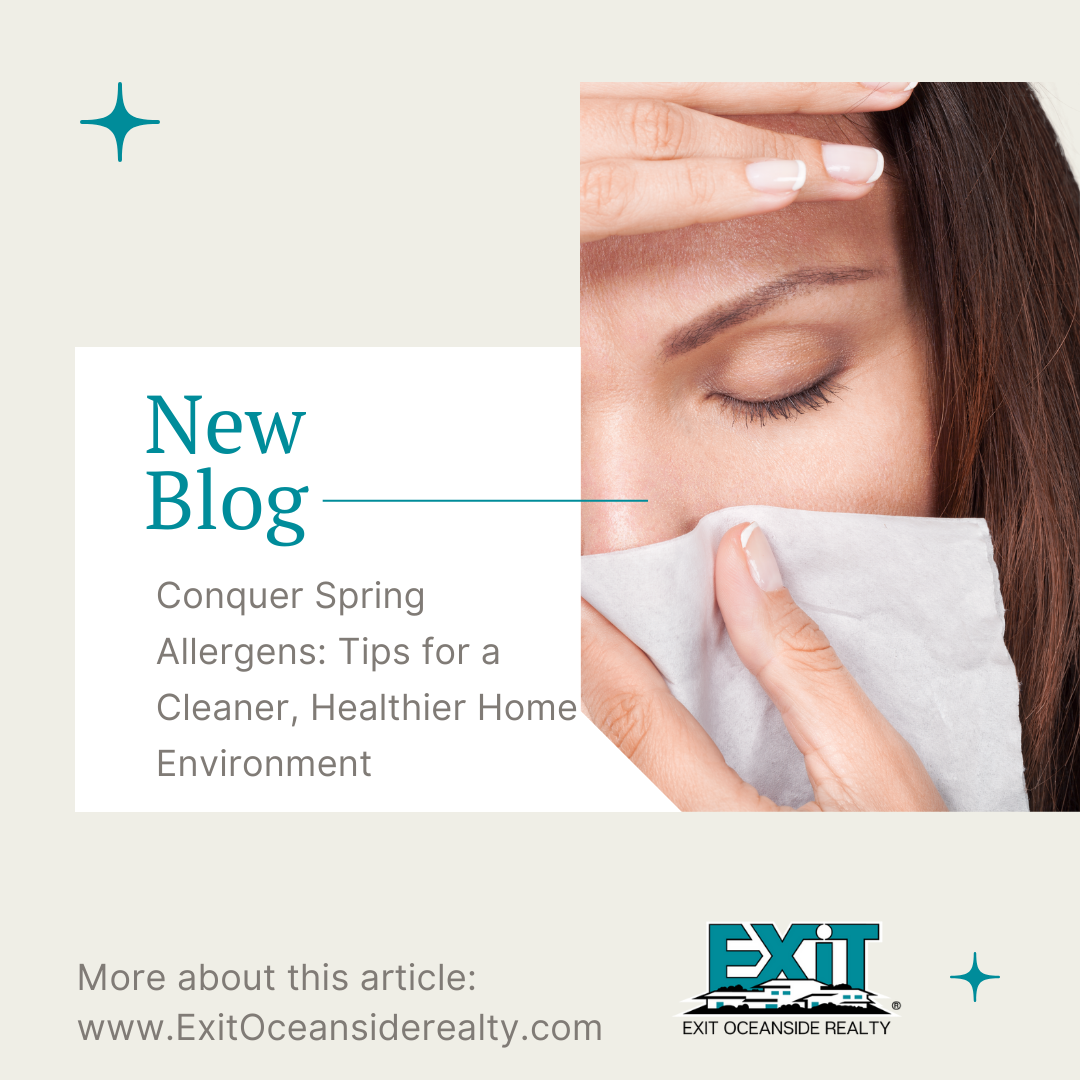Conquer Spring Allergens: Tips for a Cleaner, Healthier Home Environment

Spring is a time of renewal, but for allergy sufferers, it can also bring a host of seasonal allergens that can trigger sneezing, congestion, and itchy eyes. However, with the right strategies, you can minimize allergens and create a cleaner, healthier home environment. Here are some tips for reducing allergens and improving indoor air quality during your spring cleaning:
1. Dust Regularly
-
Use Microfiber Cloths: Microfiber cloths trap dust more effectively than traditional feather dusters or rags. Dust surfaces, including furniture, shelves, and baseboards, regularly to prevent allergens from accumulating.
-
Vacuum with HEPA Filters: Use a vacuum cleaner equipped with a High-Efficiency Particulate Air (HEPA) filter to capture dust, pet dander, and pollen. Vacuum carpets, rugs, and upholstery at least once a week, paying extra attention to high-traffic areas.
2. Wash Bedding Frequently
-
Wash Bedding in Hot Water: Wash sheets, pillowcases, and blankets in hot water (at least 130°F) weekly to kill dust mites and remove allergens. Consider using allergen-proof mattress and pillow covers to further protect against dust mites.
-
Air Out Pillows and Mattresses: On sunny days, take pillows and mattresses outside to air out and kill dust mites. Exposure to sunlight can help reduce allergens.
3. Maintain a Clean Indoor Environment
-
Keep Windows Closed: During high pollen seasons, keep windows closed to prevent pollen from entering your home. Use air conditioning with a clean filter to circulate air instead.
-
Control Humidity: Use a dehumidifier to keep indoor humidity levels between 30-50%, which helps prevent mold growth. Also, consider using an air purifier with a HEPA filter to remove allergens from the air.
4. Reduce Pet Dander
-
Bathe Pets Regularly: Bathing pets regularly helps reduce the amount of dander they shed. Consider grooming them outdoors to prevent allergens from spreading indoors.
-
Create Pet-Free Zones: Designate certain areas of your home, such as bedrooms or upholstered furniture, as pet-free zones to minimize exposure to pet dander.
5. Clean Air Vents and Filters
-
Change HVAC Filters: Replace air filters in your heating, ventilation, and air conditioning (HVAC) system regularly, ideally every 3 months or as recommended by the manufacturer. This helps trap allergens and improves air quality.
-
Clean Air Vents: Vacuum air vents and registers regularly to remove dust and debris. Consider hiring a professional to clean air ducts periodically to prevent the buildup of allergens.
6. Minimize Clutter
-
Declutter Living Spaces: Remove unnecessary items and clutter from your home, as they can collect dust and allergens. Opt for easy-to-clean surfaces and minimize knick-knacks and decorative items that collect dust.
7. Consider Allergy-Friendly Flooring
-
Choose Hard Flooring: If possible, opt for hard flooring surfaces such as hardwood, tile, or laminate instead of wall-to-wall carpeting, which can trap allergens. Use washable area rugs that can be regularly cleaned.
By incorporating these strategies into your spring cleaning routine, you can create a cleaner, healthier home environment and reduce allergens that may exacerbate allergy symptoms. Remember, consistency is key to maintaining a low-allergen environment, so make these practices a regular part of your cleaning routine throughout the spring and beyond.






